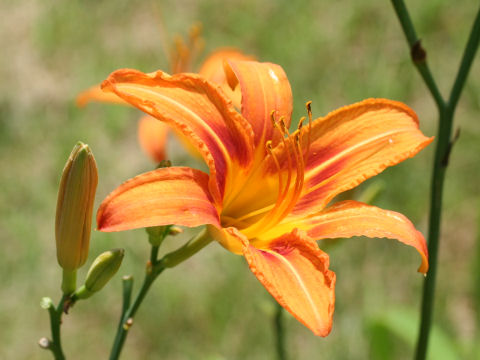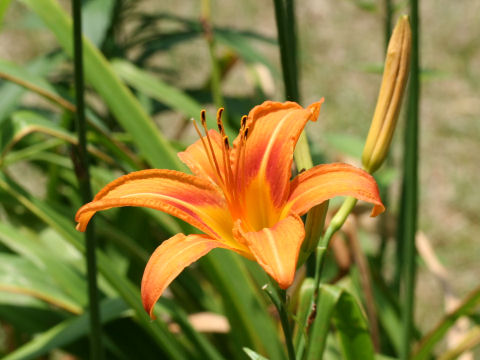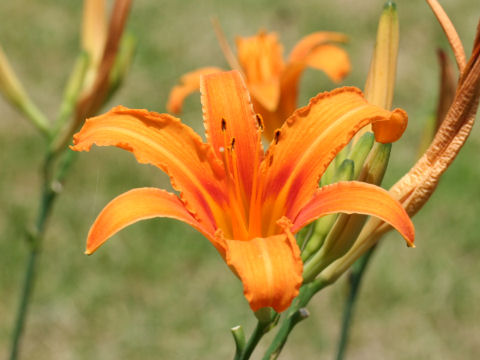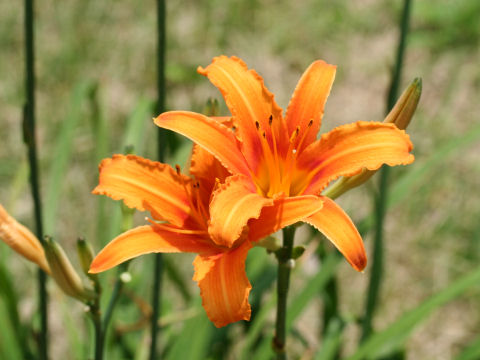
|
The Orange daylily (Hemerocallis fulva var. fulva) belongs to Liliaceae (the Lily family). It is a perennial herb that is distributed in central to southern China, Nepal and Thailand. It grows in forests, shrublands, grasslands, and riverbanks at elevations of 300 to 2500 m, and grows 1 to 1.4 m tall. Orange-red flowers bloom at the end of the scape from July to August. It is believed to be the mother plant of the "Tawny daylily", which is distributed in Japan. It has been used medicinally since ancient times. The root is called "kanzo-kon" and the flower "kinshin-sai" and has been used as a hemostatic and anti-inflammatory agent. It is also known as "Shina-kanzo". The 1st ans 2nd photos are from Nepal, and the 3rd and 4th photos are from Thailand. In Chinese, it is called "萱草" (xuan cao).
|





